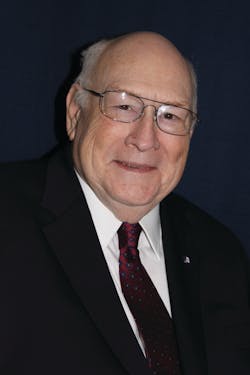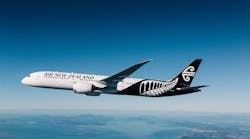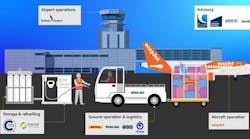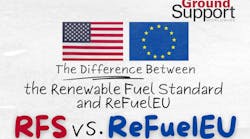Every time I pick up a newspaper, get online, turn on a radio or TV, I get news about alternate fuels for turbine aircraft. The Blue Angels are flying on alternate fuels; airliners arrived at the Paris Air Show on alternate fuel. Just today I learned that KLM Dutch Airlines will begin using bio fuel on some flights as early as this September.
Ms. Jean Medina at Air Transport Association (ATA) enlightened me with some facts on this trend. Airlines must reduce their “environmental footprint” in the future, and a miracle alternate fuel could be -- might be, hopefully will be -- the cheapest way to do that. She pointed out that a group of ten airlines working with ATA recently sent a letter to a supplier committing the airlines to buy a suitable alternate fuel in the future. That’s a powerful incentive for the supplier.
Airlines spend an unbelievably high percentage of their total costs on fuel. In a recent article, ATA VP and chief economist John Heimlich wrote that fuel represents airlines’ “highest cost center”. If a less expensive (let’s don’t say cheap) alternate fuel is possible, it will be a tremendous boost for the industry. (Some people -- including one airline pilot -- have told me it wouldn’t help because all of the airlines would be burning the same fuel and therefore none would get an economic advantage over the others. Are they overlooking the fact that the entire airline industry would benefit? Don’t they know how many people today drive, fly, or ship based on cost?)
BTW, one big measurement of any alternate fuel will be distance delivered per pound of fuel. That will take into consideration the varying weights of different fuels. So far, I haven’t seen any hard figures that provide such information.
Our military is also operating/testing the use of alternate fuel in aircraft.
The military and the airlines represent a great force in the marketplace, with advantages over piston-powered airplanes and automobiles. One big expense of any alternate fuel will be changing the entire infrastructure that handles and distributes the fuel. To do that for cars, a blue jillion service stations must change their systems. It seems to me that doing this at the relatively few airports that service airline and military aircraft would be much less expensive per gallon delivered.
Another big advantage is that military and airlines use turbine aircraft, which adapt more readily to new fuels. Decades ago a perfume factory in Europe turned out a truly huge batch of bad perfume. With slight modifications they burned that batch of perfume in their corporate aircraft. A cropduster in Alabama once told me that he “reckoned those turbines would run on fat-lighter kindling once you got ‘em started on something else.”
Finally, our guvmint (in its infinite wisdom) has already mandated the use of ethanol in mogas. That, to some extent, eliminates much of the competition to develop an alternate auto fuel.
If the airlines and military come up with an alternate fuel, the benefits will no doubt eventually extend to corporate turbine aircraft. Can we also hope for a new fuel for piston GA aircraft … even cars?




